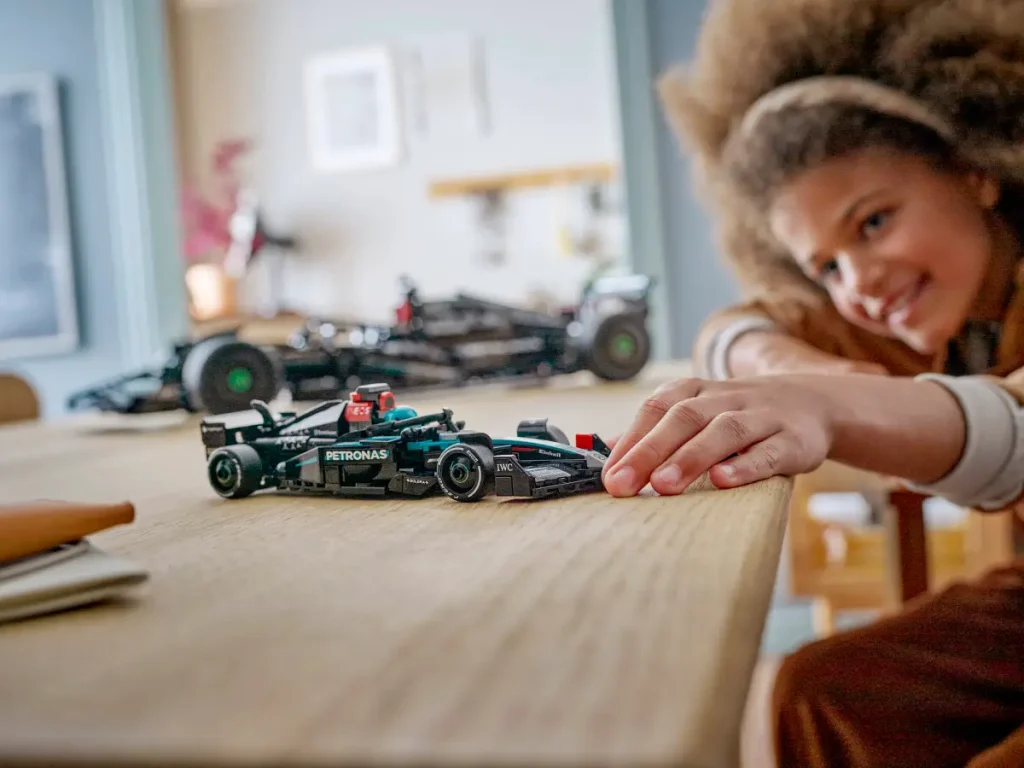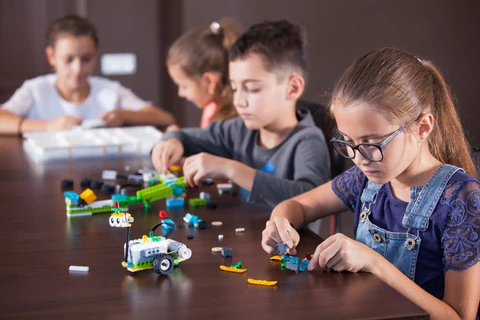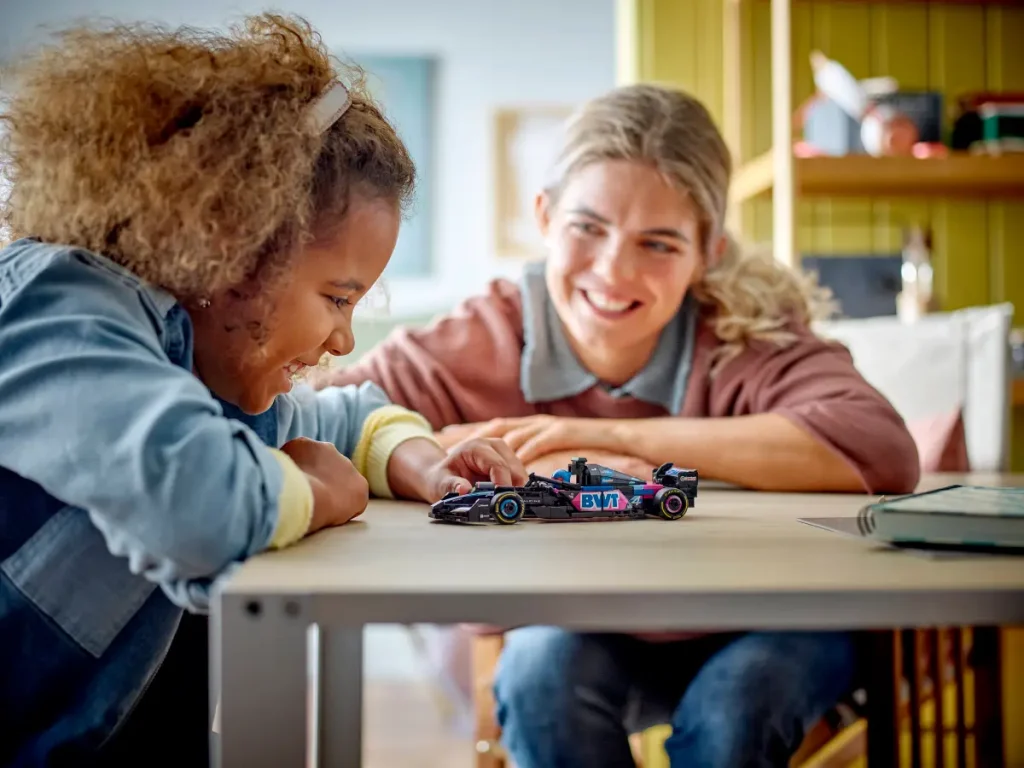
From the moment I put my first LEGO® bricks into place as a child, LEGO® has been more than just a toy to me; it’s been a doorway to endless creativity. Among the countless themes and builds LEGO® has to offer, the one that has consistently captured my interest is the cars that LEGO® offers. Whether it’s building sleek sports cars, rugged off-roaders, or imaginative racecars with rocket boosters, the experience goes far beyond fun. LEGO® cars inspire problem-solving, storytelling, and innovation which fuel creativity in ways that few other toys can, in my opinion.
LEGO® Cars as a Canvas for Creativity

One of the most powerful aspects of LEGO® is its open-ended nature. Sure, there are instructions and detailed sets, but every build is just a starting point. LEGO® cars, in particular, lend themselves to endless modification and experimentation. It is these experimental times that really helped my creativity open up.
When I was younger, I’d often take apart my LEGO® City vehicles and combine them with parts from Technic or even LEGO® Space sets. Suddenly, my pizza delivery car had jet engines and moon rover wheels. There were no rules to follow, only the question: “What if I tried this?” That question is the spark that ignited my creativity.
This process of taking a base model and improving or personalizing it helps children think like designers. They’re not just building a car; they’re creating something that solves a problem, expresses an idea, or simply looks cooler than before. This way of thinking encourages young builders to think in three dimensions, consider proportions and mechanics, and test and refine their own ideas.
Creativity Through Problem-Solving
LEGO® car builds often pose interesting challenges that really develop your critical thinking skills. For example, how do you make the front wheels turn without breaking the body? How can you lower the chassis without making the car too fragile? These questions lead to trial and error, encouraging young minds to think analytically and develop resilience when their designs don’t go as planned.
I remember working on a custom sports car where I tried to replicate the scissor doors of a Lamborghini. It took hours of testing hinge placements, reworking the frame, and rebuilding the roof. It was frustrating at times, but also incredibly rewarding. That kind of deep problem-solving is one of LEGO®’s hidden superpowers. You’re learning engineering concepts without realizing it in such a fun and unique way.
A Launchpad for Imagination

Beyond the mechanics, LEGO cars are perfect for storytelling. A young builder might imagine their custom hot rod in a desert race or build a post-apocalyptic armored vehicle for a zombie scenario. Sets like LEGO Speed Champions or LEGO City Stuntz are great examples—they come with characters and backstories that invite play beyond the build.
As a kid, I had a whole garage of custom cars for my minifigures. One was a purple drag racer driven by a pirate; another was a black armored van with spinning turrets. I’d write comic-style stories with my cars as the stars. It wasn’t just creative play—it was world-building.
Building Confidence Through Creation
When a child finishes building a LEGO® car, whether it’s a guided model or a freeform creation, they hold something real in their hands. They’ve taken an idea, looked at a pile of bricks and turned it into something functional, even beautiful. That’s a major confidence boost for young minds and helps them trust in themselves.
Seeing a child proudly explain how they added extra exhaust pipes or modified the spoiler shows how invested they are in their creations. And because LEGO® is so accessible, there’s no fear of failure. If your idea doesn’t work, take it apart and try your idea again.
As someone who’s built dozens of LEGO® cars over the years, from Speed Champions kits to intricate Technic models, I still get that sense of pride when I step back and admire the final creation. It’s a timeless feeling that i find not many hobbies provide me.
Social and Educational Benefits of LEGO® Building

LEGO® building, especially with cars, also promotes healthy collaboration for young builders. Kids often build together, trade pieces, and share tips from their experiences. They compare designs, race their creations, and give feedback. These are all important skills for communication and teamwork.
Educationally, LEGO® cars are also great tools for learning physics and mechanics. Concepts like friction, gear ratios, suspension, and aerodynamics naturally come up when you’re trying to make a car go faster or corner better. LEGO® Technic sets, in particular, introduce young builders to more complex engineering ideas without being too intimidating.
LEGO® Sets That Inspire Creativity
Some LEGO® car sets are especially good at sparking creativity:
- LEGO Speed Champions – With their realistic designs, these cars are great templates for modification.
- LEGO Technic – Offers working engines, gearboxes, and steering mechanisms for a more engineering-focused experience.
- LEGO City – Accessible and easy to customize, these vehicles often come with extra accessories and scenery to inspire stories.
- LEGO Creator 3-in-1 – Each set offers multiple builds, showing kids that one set of bricks can be used in different ways.
Final Thoughts
LEGO® cars do much more than entertain; they empower. Through building, modifying, and imagining, young builders learn to think creatively, solve problems, and express themselves. Whether it’s a tiny go-kart made from spare bricks or a massive Technic supercar, each creation is a testament to a child’s growing mind.
As someone who grew up immersed in LEGO® and still builds today, I can confidently say that LEGO® cars are a perfect gateway to a world of creativity. They offer enough structure to guide, but enough freedom to explore. And in a world filled with screens and passive entertainment, there’s something uniquely powerful about a toy that says: “Here are the pieces, now build something amazing.”
